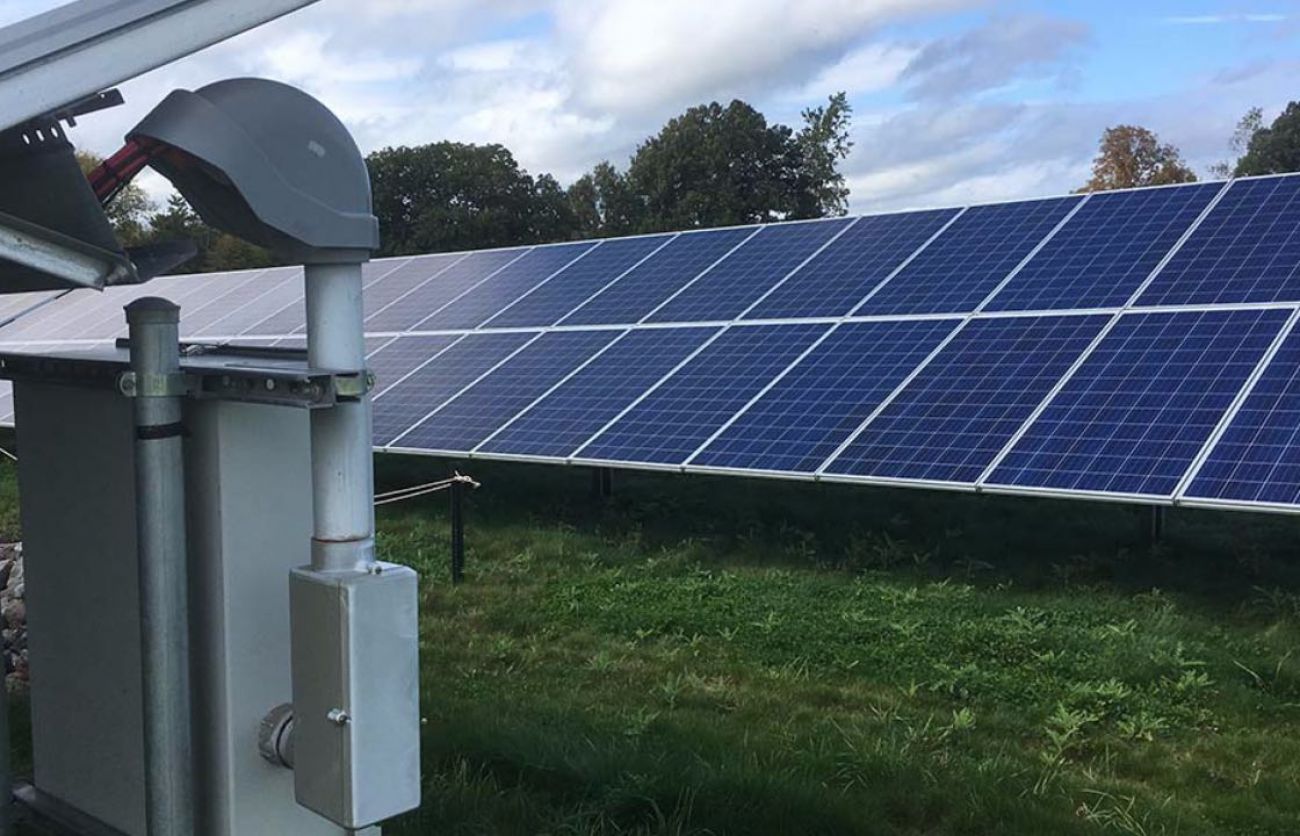Michigan environment roundup: Bringing solar power to the Upper Peninsula

Bridge Magazine is committed to sharing the best environmental journalism in and around Michigan, an effort called #EnviroReads.
In Bridge’s Michigan Environment Watch, we share a roundup of recent stories on the Great Lakes or other environmental issues. If you see a story we should include next time, use the hashtag #EnviroReads on Twitter or email Environmental Reporter Jim Malewitz at jmalewitz@bridgemi.com.
Climate change transforming where fish in the Great Lakes region live
Detroit Free Press
“Climate change is warming the waters of the Great Lakes and other lakes and rivers in the region — a big concern to scientists and fisheries managers, as few animals are more sensitive to temperature than fish,” Keith Matheny reports. “Different fish species need different temperature ranges to thrive. And the region's warming waters are already causing fish population shifts, with the consequences not yet fully understood.”
Amid energy transition in Michigan’s Upper Peninsula, what is solar’s role?
Midwest Energy News
“The Upper Peninsula Power Co., which has some of the highest electric rates in the continental U.S., is looking to buy power from a large-scale solar project it says would help reduce costs for its customers,” reports Andy Balaskovitz. “...While the proposal faces headwinds from some local residents opposed to a massive project that could occupy hundreds of acres of farmland, it could spark a shift in the U.P.’s energy future that until now has been dependent on natural gas to replace coal.”
For some, slowing CWD in Michigan is not enough — can it be stopped?
Interlochen Public Radio
“To help combat chronic wasting disease, Michigan is banning deer baiting and feeding across big parts of the state. It’s highly unpopular with some hunters and lawmakers. But, banning bait will only slow CWD from spreading to new areas, and more aggressive approaches that might actually stop it could be just as unpopular,” Kaye LaFond reports. “...An extreme example is the country of Norway, which exterminated an entire reindeer herd (about 2,000 animals) after it found three reindeer infected with CWD. Hunters took as many as possible, and then the government sent in sharpshooters.”
PFAS levels rise in Michigan drinking water from Lake Erie
MLive
“Heightened scrutiny on toxic fluorochemicals in the River Raisin watershed helped regulators discover an uptick of the contaminants in Lake Erie drinking water this fall,” Garret Ellison reports. “Water systems in the city of Monroe and adjacent Frenchtown Township recorded a surprise increase in PFAS levels last month, prompting a scramble among utility managers to reassert the safety of local tap water and state regulators to run more testing.
Climate Resilience on Detroit’s East Side
Belt Magazine
“On a hot, sticky morning on Manistique Street, in Detroit’s Jefferson-Chalmers neighborhood, Tammi Black and a group of friends and neighbors who call themselves the ‘Women of Empowerment’ are gathered beneath a shade umbrella in a vacant-lot-turned-community-garden adjacent to Black’s home, a cooler of ice water at the ready. Half a mile to the south, water from the Detroit River is pouring into the neighborhood, over the edges of the canals that lace this historic part of the city’s east side. The river water is flooding streets, overwhelming the combined sewer system, and leaking into basements. Sandbags provided by the city are piled in stacks across driveways and sidewalks in a mostly vain attempt to stop the deluge,” Nina Misuraca Ignaczak reports. “... Jefferson-Chalmers is a case study for how equity, climate vulnerability, and resilience interact.”
Lake Michigan reached record high levels this summer. Is climate change the cause?
Green Bay Press-Gazette
“Shorelines around Lake Michigan and the Great Lakes have changed dramatically as lake levels steadily rose from a record low hit just six years ago. This year, Lake Michigan rose an additional 15 inches, according to the National Oceanic and Atmospheric Administration, matching the record high set in 1986,” Sammy Gibbons reports. “...Locals buffeted by the change are wondering if they should expect these levels in coming years, and whether its related to a changing global climate.”
Michigan Environment Watch
Michigan Environment Watch examines how public policy, industry, and other factors interact with the state’s trove of natural resources.
- See full coverage
- Subscribe
- Share tips and questions with Bridge environment reporter Kelly House
Michigan Environment Watch is made possible by generous financial support from:
Our generous Environment Watch underwriters encourage Bridge Michigan readers to also support civic journalism by becoming Bridge members. Please consider joining today.
See what new members are saying about why they donated to Bridge Michigan:
- “In order for this information to be accurate and unbiased it must be underwritten by its readers, not by special interests.” - Larry S.
- “Not many other media sources report on the topics Bridge does.” - Susan B.
- “Your journalism is outstanding and rare these days.” - Mark S.
If you want to ensure the future of nonpartisan, nonprofit Michigan journalism, please become a member today. You, too, will be asked why you donated and maybe we'll feature your quote next time!





